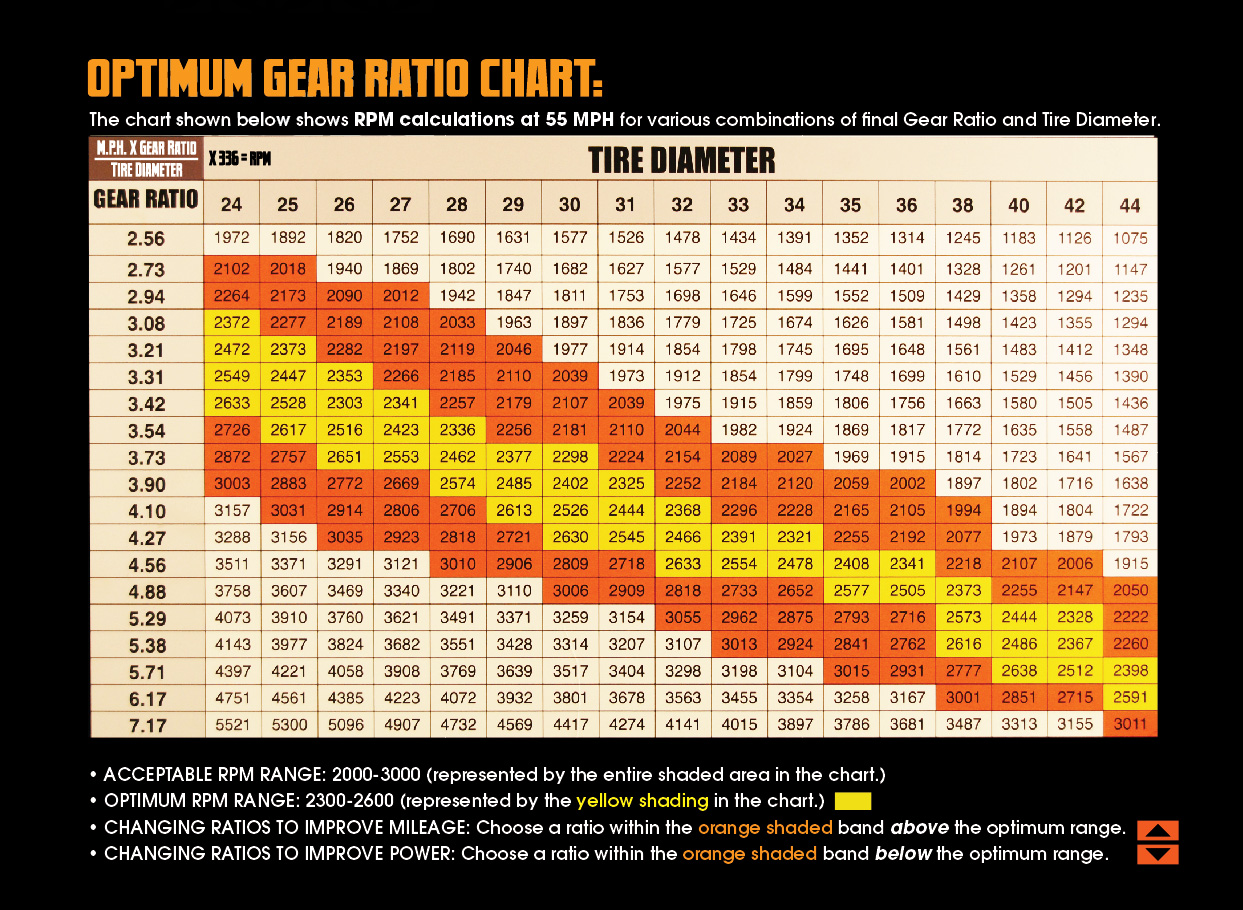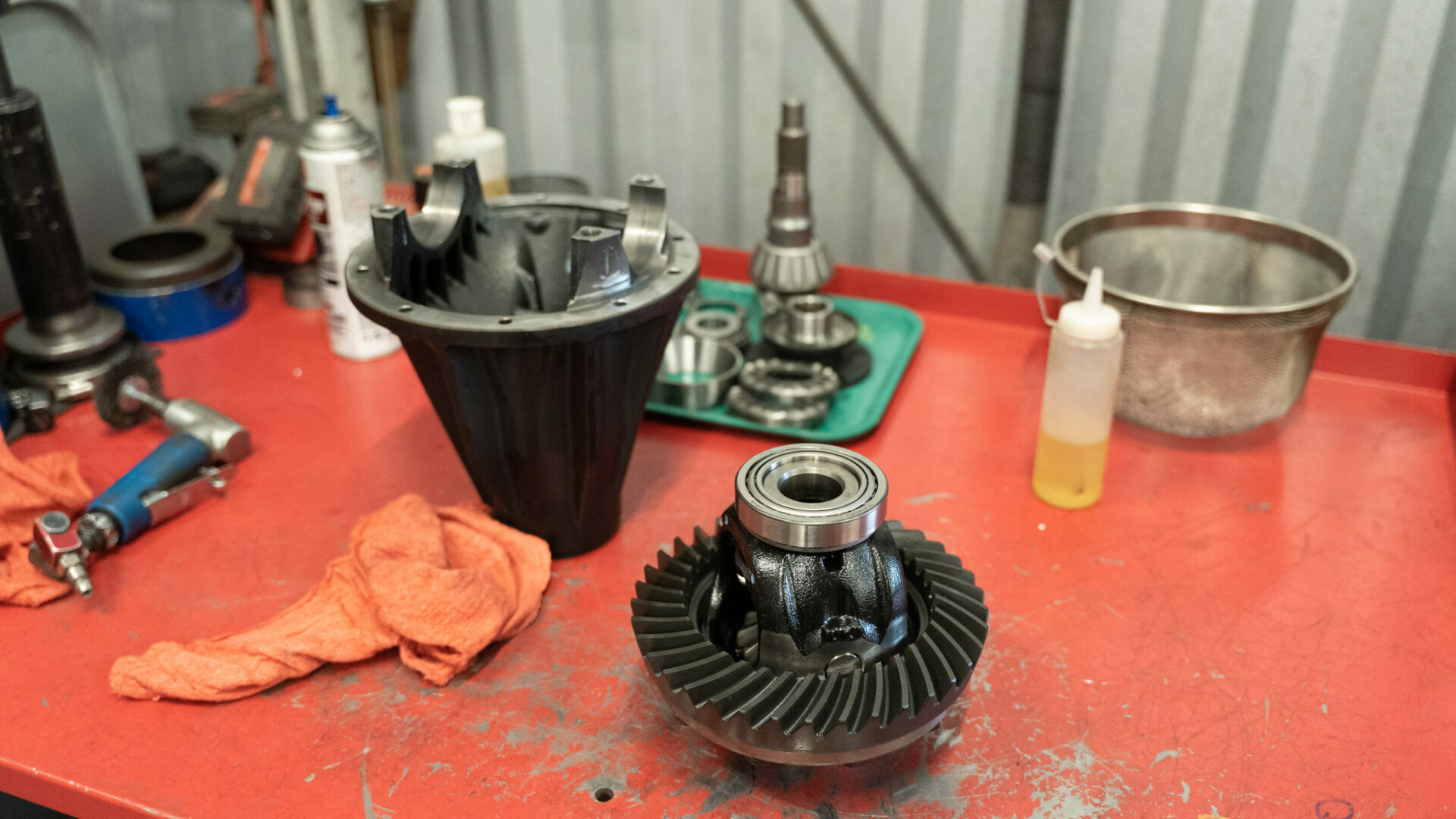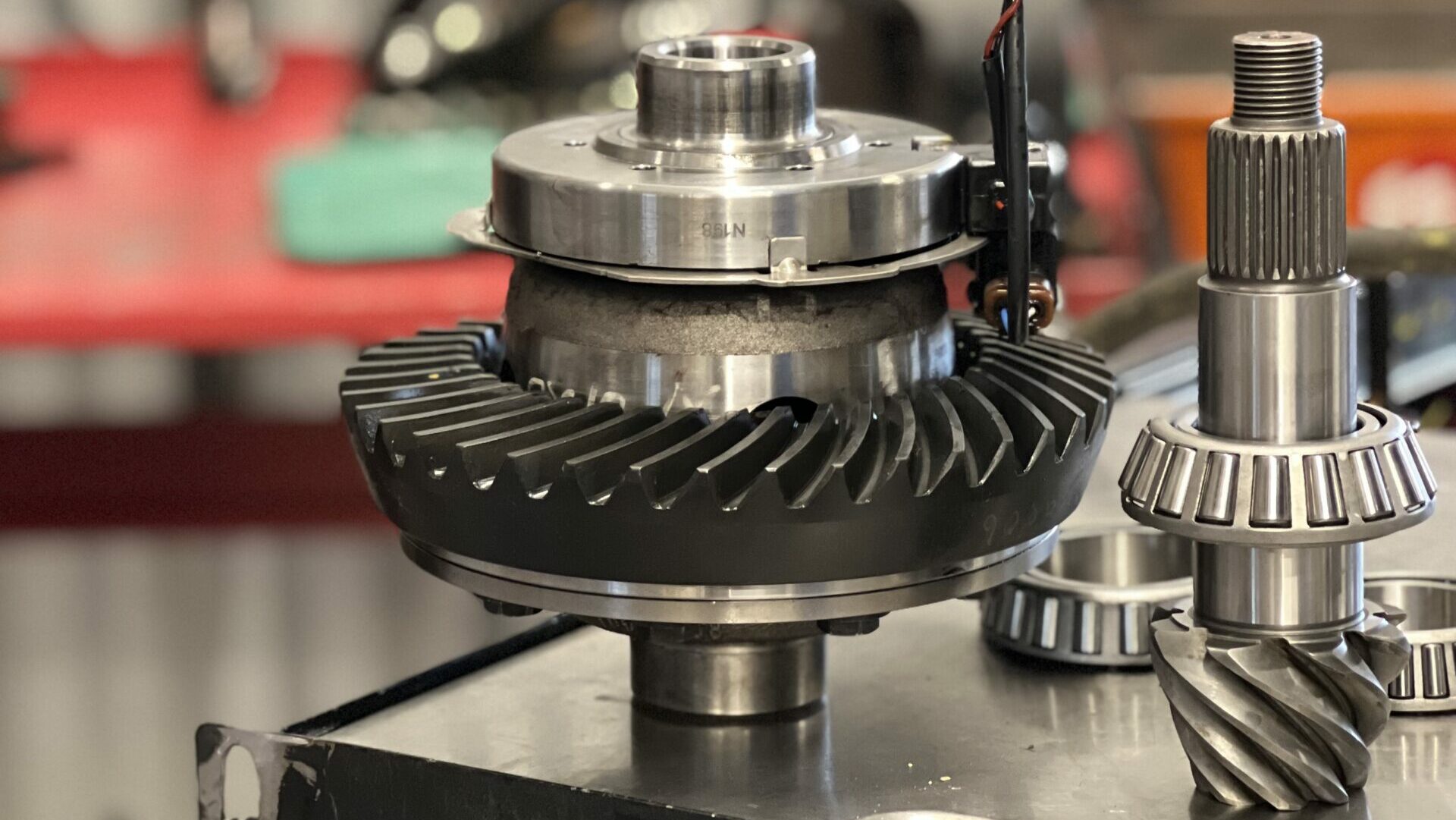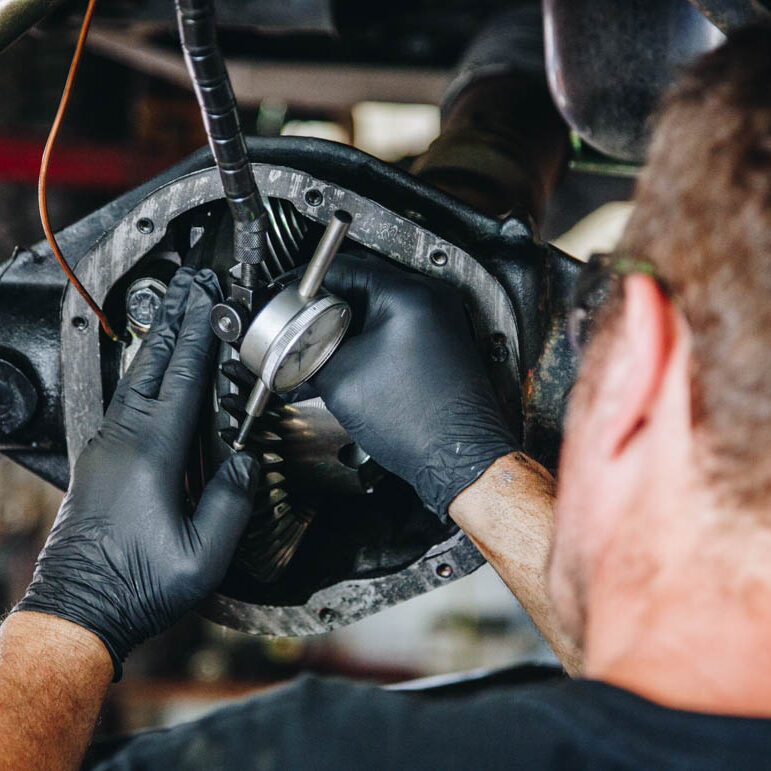Axle gear ratio is an important factor to consider when upgrading tires on a vehicle. This ratio refers to the number of times the driveshaft must turn to complete one full rotation of the axle shaft (for example, 3.55 to 1). The correct axle gear ratio can greatly impact the performance and fuel efficiency of a vehicle, and it is essential to choose the correct ratio that is well paired with the size of the tires.

The gear ratio chart above can be used to calculate the ideal ratio for your larger tire size. As you can see, there is some flexibility in the exact gear ratio selection depending on the desired outcome of the change. Use the column for your actual measured tire diameter (size can vary by brand) and match it to the ratio in the optimum range. You can also see which ratio would be best if you’re looking to improve economy, or alternatively, power. Chart source: Adams Driveshaft & Offroad
It is important to understand that one of the jobs of the axle is to transfer power at a right angle, from the driveshaft to the wheels. The axle gears in your 4×4 are comprised of two main parts: a ring gear and pinion. Connected to the driveshaft, the pinion serves as the power input to the axle. The pinion meshes at a right angle with the ring gear, which is attached to a carrier. The carrier is the “differential” part of the axle, and is what is connected to the axle shafts that turn the wheels and tires. Another primary function of the axle is to reduce the amount of effort needed to turn the tires. No matter the ratio, it is always a number greater than 1:1, resulting in more revolutions of the pinion than the axle shaft. The higher the numerical value of the ratio, the easier it will be for the pinion to turn the axle shafts, resulting in a higher RPM at the pinion.

When upgrading tires, it is important to choose a tire size that is appropriate for the vehicle’s suspension and axle system. The tire size affects the overall diameter of the tire and wheel assembly, which in turn affects the gear ratio. The gear ratio determines how much torque is transferred from the engine to the wheels. If the tire size is larger, the gear ratio must be lower to compensate for the increased diameter, and vice versa.
A low gear ratio provides more torque to the wheels, which is ideal for off-roading or towing heavy loads. This results in more power to the wheels, taking strain off the engine and other drivetrain components. However, a low gear ratio may decrease fuel efficiency, as the engine has to work harder to maintain speed. On the other hand, a high gear ratio increases fuel efficiency, as the engine has to work less to maintain speed, but it provides less power to the wheels, increasing the strain on the drivetrain and making it more difficult to drive slowly through challenging terrain or tow heavy loads.

The ideal gear ratio and tire size depends largely on the intended use of the vehicle. For example, a vehicle used for technical off-roading would benefit from a larger tire and low gear ratio, while a vehicle used primarily for highway driving would benefit from a smaller tire and high gear ratio. It is essential to choose a gear ratio that is compatible with the tire size and intended use of the vehicle.
One of the best ways to determine the correct gear ratio is to consult an expert. Here at Mount Zion Offroad, we have the necessary knowledge and years of experience to determine the ideal gear ratio based on the tire size and intended use of the vehicle. Quite simply, we’ve seen what works and what doesn’t for every common 4×4 vehicle! We can also recommend other drivetrain upgrades which may be necessary, such as axle shafts or driveshafts.

In conclusion, the desire to deviate from the stock tire size is typically what prompts a gear ratio change. The gear ratio affects the performance and fuel efficiency of the vehicle, and it is essential to choose a ratio that is compatible with the tire size and intended use of the vehicle. A consultation with us is the best way to determine the ideal gear ratio, and it is important to choose a ratio that provides the best balance between performance, fuel efficiency, and cost.
by Jon Tirrell
Mount Zion Offroad Staff Writer